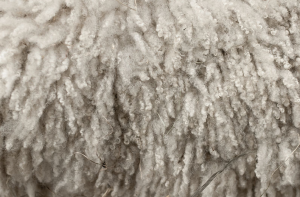We know it can be difficult to understand exactly what sustainable fashion means, and the material your clothing is made from plays a BIG role in it's environmental impact! It's hard to know which sustainable materials to look out for. The Susta-Style 1MW Guide to Sustainable Fabrics series is looking at the most important sustainable fabrics in use today, and also the fabric innovations that lie ahead for the future.
Organic Wool is our sustainable fabric this week.

Organic wool:
Just as regular wool, organic wool comes from sheepskin and has the same benefits man has known and enjoyed for thousands of years: it keeps you warm. Organic livestock management means:
- Sheep cannot be dipped in Parasiticides (insecticides) to control external parasites such as ticks and lice.
- Organic livestock producers must ensure that they do not exceed the natural carrying capacity of the land on which their animals graze.
Organic/byodnamic production systems:
- Organic means the wool is produced to a set of standards related to issues such as chemical use, animal welfare and sustainability.
- Biodynamic is another form of organic farming which enhances soil structure and nutrient cycles, hence improving plant and animal growth and development.
Around 300 tonnes of clean certified organic/biodynamic wool is currently produced in Australia – about 0.06% of the national wool quota.

What to watch out for:
Similar to Organic Cotton, the organic certification for wool only covers the livestock – it doesn’t cover the further processing of the raw wool, which involves washing (using water & detergents) and energy. What you want to look out for are products where “organic” covers:
- Management of the livestock according to organic or holistic management principles.
- Processing of the raw wool, using newer, more benign processes rather than harmful washing chemicals/detergents.
- When possible not dyed and left it's natural colour.

Look out for next weeks Susta-Style post on Hemp.
Don’t forget to head over to our website! We are daughters, mothers, sisters and grandmothers getting on with practical climate action to live better for us and the planet. Join the movement at www.1millionwomen.com.au
- Susta-Style is a weekly post on sustainable fashion, shopping and design.
